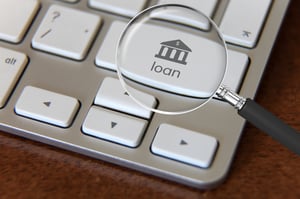Pay cash or finance? It’s an age-old question in real estate, and everyone’s got an opinion.
Some buyers prefer all-cash sales for good reasons, like avoiding lender relationships, interest charges, and monthly mortgage payments. Others choose to finance for the simple reason that they don’t have enough capital to buy a property outright or they don’t want to tie up too much capital into each investment property.
That said, real estate investors with all-cash buying power should seriously consider borrowing as much as they can for their ventures—they’ll get way more bang for their buck. Let’s dig a little deeper into how that works.
The Power of Debt

Nobody wants debt, especially the kind that accrues interest and yields nothing. However, not all debt is bad. A home mortgage, for example, is low-interest debt that provides the borrower with a living space and tax benefits.
That’s great, but good debt can do so much more.
When you leverage good debt, you’re tapping into a powerful real estate investing tool that can transform your first home purchase into a bona fide real estate portfolio.
What’s Leverage?
When a buyer adopts certain financial tools or borrowed money to boost potential return on an investment, it’s called leveraging. A common investment practice from Wall Street to real estate, leveraging is using “other people’s money” to acquire a revenue generating asset.
The following scenario illustrates how leveraging good debt (or “other people’s money”) can truly supersize your returns—even when you already have the cash to purchase a home without help.
The Power of Leverage

Let’s say you have $200,000 to invest in a rental property. You find a home at that price and execute the transaction.
Single-family rental investors make money from both rent and appreciation. Therefore, with this home your monthly net rental income is $700 after expenses and reserves, while the home appreciates 5% every year.
After one year, you sell the home. The 5% appreciation yields $10,000 and the accumulated rental income $8,400, bringing your total profit to $18,400.
Though an $18,400 annual return is nothing to scoff at, it pales in comparison to what you can earn using “other people’s money.”
Let’s look at the same scenario, this time leveraging good debt.
Instead of buying one home for $200,000, this time you purchase five homes.
Here’s how this works: You put $40,000 down on five separate $200,000 rental homes, and the rest is financed. After expenses, each home clears $150 monthly net income—taking into account the added expense of a mortgage payment—and the homes appreciate 5% each year.
When you sell a year later, each of the five homes has appreciated by $10,000 and generated $1,800 in rental income. Taken all together, the total profit would be $59,000 ($10,000 x 5 + $1,800 x 5).
As you can see, for the same $200,000 real estate investment within the same timeframe, the leveraged buyer made roughly 220% more than the cash buyer.
Risks and Rewards

We’ve covered the substantial rewards of using financing to purchase a single-family rental property. In a nutshell, leveraging gives investors a larger market stake and subsequently much more return.
No investment comes without risk, however. Here are a few to keep an eye on:
Less Cash Flow: Using debt to purchase a property will reduce your monthly cash flow, because your monthly mortgage payment takes a bite out of the rent income. On the flip side, more money tied up in your property means less in your pocket.
Getting Underwater: This is when the property is worth less than the mortgage, and it usually occurs when the loan’s LTV is too high and the market takes a dip. HIstorically, this has not been too much of a factor for property investors, but it can happen.
Other risks include things like delayed property sales, vacancy issues and inability to make mortgage payments. All of these can be mitigated through careful planning, preparation and market research.
Mitigating Risk
Experienced investors strike a balance: They use just enough financing to increase returns but not so much that they find themselves holding more debt than property value. Another way to minimize risk is to use cash flow to pay down debt, whether on the property itself or on debt owed for another rental property.
This calculated approach is easier for investors than homeowners, because their purchase decision is dictated by detailed number-crunching—not emotion.
How to Finance Your Investment Property - The Ultimate Cheat Sheet
Using leverage to finance your investment property can be a great way to maximize returns and achieve your investment goals. But if you’re a first-time investor, it can be hard to know where to begin.
To distill it all down, we chatted with Erik Peterson, home lending expert at Better Mortgage. Set yourself on a path toward real estate investment success with these financing tips, plus a handy checklist of what you’ll need to gather for the application process.
- Pay attention to your credit score
- Have the necessary cash reserves
- Put at least 20% down
- Know that mortgage rates are higher on investment properties
- How to choose the right lender for you
- Consider a fixed-rate mortgage
- Bonus: Documentation checklist
Pay attention to your credit score
Like most major purchases made with financing, lenders are going to want to take a closer look under your financial hood — starting with your credit score. Here’s how your credit score impacts eligibility and interest rate options:
- 620: This is technically the minimum credit score needed to finance an investment property. However, it can be challenging to qualify for a loan until your score is at least in the high 600s. And even then, your rate and costs won’t be as favorable.
- 640-719: A score in this range means you may have to pay a fee to get a standard interest rate, or pay a higher interest rate on your loan.
- 720-740: A credit score in this range will land you rates inline with what you typically see advertised.
- 760: This is the minimum score required for top-tier rates.
Have the necessary cash reserves
Don’t forget to think about the money you will need need left over in the bank after the down payment and closing costs.
“Typically, conventional lenders require at least six months of mortgage payments as reserves after you close. In the event something were to happen, this ensures you could cover six months,” explains Peterson. “So you’ll need to have your down payment, closing costs, plus six months in savings to cover your mortgage payments.”
If you own other properties, most lenders will want to see two months of reserves for each of those as well.
It’s also important to know that gift funds can’t be used for an investment property. Unlike the purchase of your primary residence, all the funds must be yours or the co-borrower’s.
Put at least 20% down
While you can put as little as 3% down on your own home, very few mortgage lenders will work with less than 20% down when it comes to investment properties. This is because buying a property with less than a 20% down payment requires private mortgage insurance (PMI). PMI protects your lender in case you default on the loan, and it’s more difficult to secure PMI for investment properties.
While some lenders like Fannie Mae will work with a minimum of 15% down, going this route will ultimately eat into your bottom line. According to Zillow, the premiums for private mortgage insurance can range from $30-70 per month for every $100,000 borrowed.
Alternatively, a down payment of 25% or more will get you the best interest rate possible. “That’s the gold standard,” says Peterson.
Know that mortgage rates are higher on investment properties
People are more likely to default on rental property mortgages than the homes they actually live in, according to Peterson. Because of this, most lenders adjust their rates by roughly half a percent above typical rates for a primary or second home.
It’s perfectly fine to shop around for loans, but watch out for lenders who offer interest rates that are much lower than others. (More on that below.)
“Things might vary by a quarter of a point, or a little bit in the fees. But if it’s way lower, lenders are usually trying to sell you on rates and fees for primary residences,” Peterson advises.
Choose the right mortgage lender for you (here’s how)
1. Look for investment property expertise
“Read reviews and make sure you're working with a credible lender who is familiar with investment property financing specifically, because it is quite nuanced compared to buying a primary residence,” says Peterson.
2. Determine if you need a mortgage broker or direct lender
You can choose to work with a direct lender, such as a bank, mortgage bank, or non-bank lender, or you can work with a mortgage broker, who will try to match you with a lender that best meets your needs.
“If you have a good credit score, down payment, and either W-2 income or verifiable self-employment income that we can document for at least two years, working with a direct lender will get you the best pricing,” notes Peterson.
Another benefit of working with a direct lender, such as a bank or mortgage company, is that they have everything in house. “They're accessing their own pricing in real time. They have their own underwriters. And because they are that much closer to the decision-makers, you’re going to get a lot more transparency in terms of what your rate actually is, what your costs are going to be, and where you stand in the process,” he adds.
Alternatively, a licensed mortgage broker acts as a middleman and will try to match you with a lender that best meets your needs. A mortgage broker may be a better fit for non-qualified mortgages and those looking for more flexible loan programs, Peterson says.
3. Weigh your size options
Larger institutions have more resources, but are often less flexible in what they can do for you with financing. They will sometimes add additional overlays (restrictions) on top of Fannie Mae and Freddie Mac’s guidelines. You may need a higher credit score, more cash reserves, and higher income. There may be tighter limits on the number of properties you can finance.
For example, most big banks won’t allow you to have more than four mortgages. However, under Fannie Mae’s guidelines, you can have up to 10 mortgages on your personal credit. Smaller banks, on the other hand, are more likely to go straight off Fannie Mae and Freddie Mac’s requirements.
4. Ask how long will it take to close
Larger banks have longer, more bureaucratic processes, and may take up 60 days. Smaller direct lenders can close in 30 days or less, which means you start earning passive income sooner.
5. Review your loan estimate
Mortgage loans include a lot of fees, or closing costs. Some costs will be the same regardless of which lender you choose, and others will vary by state law, lender, and type of mortgage loan. To accurately compare lenders, review your official loan estimate.
All lenders are required to use the same loan estimate form from the Consumer Financial Protection Bureau. This standardized document uses clear language to describe a loan’s terms, including estimated interest rate and monthly payment. Unlike rate sheets, the loan estimate includes binding — not estimated — lender fees.
“A lot of buyers will select a lender based on an advertised rate without reviewing an official loan estimate,” says Peterson. Unfortunately, that advertised rate is often for primary residences.
Additionally, “some lenders may artificially deflate certain costs in the beginning," Peterson continues. "Then once the process gets started, costs get added or increase pretty substantially. Make sure you’re comparing the same interest rate, for the same loan amount, for the same purchase price. That way, you’ll know what the outright costs are for a specific rate.”
6. Get prequalified with a lender who works in all 50 states
This allows you to focus on finding the right real estate investment for you — regardless of where it’s located — and be ready to act quickly when the time is right.
7. Personal connection matters
While qualities such as size and operational footprint are important, it’s not always just about the numbers. This is a major financial transaction, and you should feel comfortable with the person you’re going to be dealing with potentially every day for 30 days. Find someone who returns your calls promptly and is looking out for your best interests.
Tip: Roofstock partners with vetted lending partners like Better Mortgage to help make the financing process as seamless as possible.
Consider a fixed-rate mortgage
When the housing market crashed in 2008, many homeowners simply walked away from properties that were under water, or worth less than their mortgage. Since then, lending practices have become more conservative.
Currently, 30-year, fixed-rate mortgages are usually the best way to go, according to Peterson. This type of mortgage typically requires the lowest monthly payment. Plus, you’ll always know exactly what the monthly mortgage payment will be. This stability makes it easier to budget, determine rent, and plan for future investments. Additionally, prepayment penalties on fixed-rate mortgages are very rare these days, so you can make extra payments and pay off the loan sooner if you want.
On the other hand, adjustable rate mortgages can change monthly throughout the life of the loan based on market conditions, putting you at risk for unexpected jumps in your mortgage payments.
Investment property financing checklist
If you’re thinking about applying for an investment loan, gathering as many of the necessary documents ahead of time can help jumpstart the process. Your lender may ask for other types of documentation not on this list, but here’s what you can generally expect:
✅ Copy of your driver’s license
✅ Bank statements for the last two months
✅ Your two most recent statements (either for last two months or last two quarters) for all other assets and reserves, such as investment and retirement accounts
✅ A credit report
✅ W-2 forms for the last two years and pay stubs for the last 30 days
✅ Federal and state tax returns for at least the last year
✅ Mortgage statements and homeowners insurance declarations for your primary residence and any rental properties
✅ Any current lease agreements for investment properties you already own, as well as official closing documents
✅ Home inspection documents. Most of the time your mortgage lender will do an appraisal of the house. But it’s smart to pay for a home inspection yourself before you make an offer, so there are no surprises down the line.
✅ Bankruptcy, divorce, or separation papers, if applicable
Want to learn more about the power of leverage? Here's a webinar from our Rooftalk series that covers strategies for financing and refinancing.










